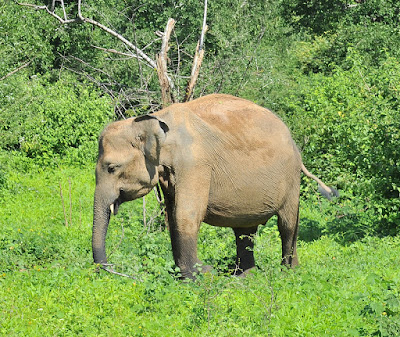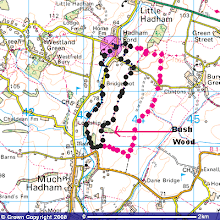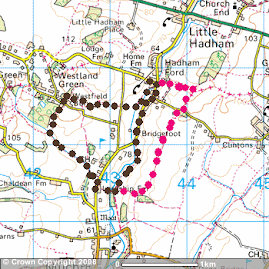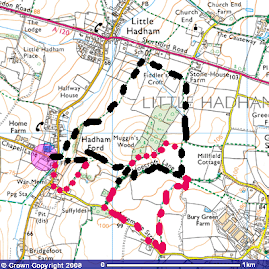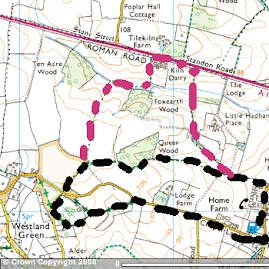Another morning set off for North Norfolk. Today, first stop was to be Holkham Beach. En-route I recorded various birds: red kite, kestrel, common buzzard along with regular sightings of corvids and gulls etc. A huge, 300+ flock of fieldfare were noted near Swaffham.
Having parked in Lady Anne's Drive, I checked the Freshmarsh, large number of wigeon and brent geese whilst a water rail, scurrying across the road was a pleasant surprise. I got on to the beach and headed towards Holkham Gap to the East. A sign told me Northern Lark were present. What is it with the usage of American birds names in the UK? They are shore lark!! Anyway, the area was roped off, pleasing to see as last year, when 13 were present, photographers were perpetually trying to get too close and this meant the birds were constantly being moved on, using up valuable energy. Basically, if you stayed quiet and still there was the chance the birds would come close enough for a photo and, in poor morning light, indeed they did. In total, I counted 24 present along with a large flock of 90+ snow buntings which were constantly on the move.
 |
| Injured brent goose |
 |
| Sign on the beach, right message, wrong name! |
 |
| Distant snow bunting, heavily cropped |
 |
| another snow bunting |
 |
| distant shore lark |
 |
| enhanced colour |
 |
| another shore lark |
I then headed off for a spot of sea watching. Several cormorant on the water but after checking backwards and forwards came across a great northern diver and a slavonian grebe, both fairly far out and viewed through the scope. On a spit of sand, oystercatchers, common, herring and black headed gulls and a few sanderling. At 6C and a good breeze, it was not a time to spend sitting in the dunes for too long, so I headed back to the car. By now the clouds had lifted and the sun was making an effort to climb into the sky.
 |
| Holkham Beach, low tide |
A brief stop at Burnham Overy Staithe, then Burnham Deepdale to buy lunch. I took this to Brancaster Staithe where I watched waders on the mud. A particularly menacing herring gull gave me the eye, probably expecting my ham sandwich! AsI left, a rock pipit popped up on one of the boats moored on the mud.
Then off to Titchwell, arriving at 1.45, with the sun already on a downward path. The island hide gave views of regular species (black tailed godwits, avocets, shoveler, wigeon etc) so off to the Parrinder Hide where a water pipit settled briefly, too briefly, in front of the hide along with a large flock of linnet. Several dunlin, hundreds of golden plover and lapwings as well as shelduck and more teal and wigeon.
Then, off to check the Volunteer Marsh and then the Tidal Marsh: grey plover and pintail were added but by now the sun was very low and getting dark, so I returned to the car. As I did, all the plovers went up as one, something had spooked them. A quick check of the sky gave up the answer: a peregrine.
With little light left I headed to Thornham Harbour. I was greeted by a mixed flock of finches, containing mainly goldfinch, several redpolls and 5 twite. Pleasing to see as my last visit here a week last Monday had concluded in only hearing them as they flew high in a bright sky.
 |
| Turnstone, Brancaster Staithe |
 |
| winter plumaged herring gull expecting my lunch! |
 |
| drake teal |
 |
| duck teal |
 |
| Inquisitive lapwing |
 |
| Plovers put up by the peregrine |
 |
| drake shoveler |
 |
| Brent geese awaiting permission to land |
 |
| Permission granted |
 |
| Dusk time dunlin and 2 wigeon |
 |
| over the Freshmarsh |
Species list:
- Great northern diver (new for year)
- Slavonian grebe
- Cormorant
- Little egret
- mute swan
- pink footed goose
- greylag goose
- canada goose
- brent goose
- egyptian goose
- shelduck
- mallard
- pintail
- shoveler
- wigeon
- teal
- red kite
- common buzzard
- marsh harrier
- peregrine falcon
- kestrel
- pheasant
- water rail
- moorhen
- coot
- oystercatcher
- avocet
- grey plover
- golden plover
- lapwing
- sanderling
- turnstone
- dunlin
- edshank
- black tailed godwit
- bar tailed godwit
- curlew
- snipe
- black headed gull
- herring gull
- common gull
- wood pigeon
- green woodpecker
- shore lark
- water pipit (new for year)
- rock pipit
- pied wagtail
- wren
- dunnock
- robin
- redwing
- fieldfare
- blackbird
- great tit
- blue tit
- coal tit
- magpie
- jackdaw
- carrion crow
- rook
- starling
- chaffinch
- linnet
- goldfinch
- twite
- lesser redpoll
- reed bunting
- snow bunting
 |
| Looking over Thornham Marsh towards Titchwell |
 |
| Pink foot geese coming in to roost near Holme |
 |
| Thornham Harbour |
 |
| Tricky to get depth of field right here! |
 |
| Moon rising |
























































